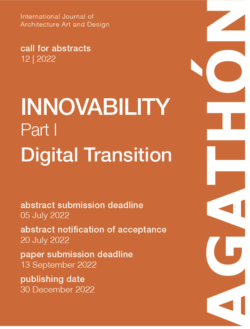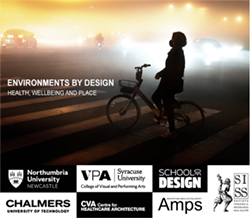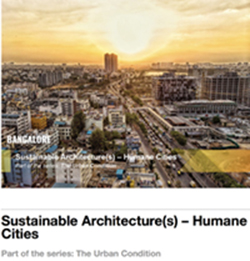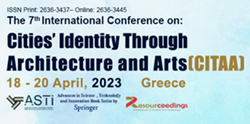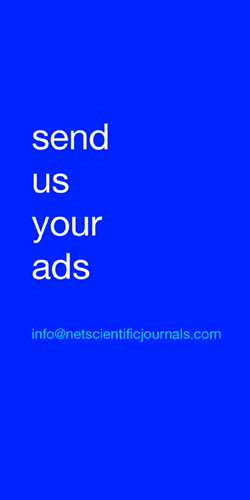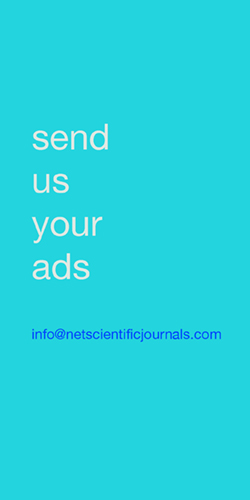Jan
2021
Aug
2021
Sep
2021
Fifty years ago, Spencer Silver at 3M invented the not-so-sticky-reusable adhesive that years later enabled the development of the Post-it® note. Since then, the sticky note has arguably become the most commonly used design material in creative design activity and a must-have tool in any brainstorming session. Despite the fact that sticky notes are extremely frequently used in creativity and design practice, very little research exists on why they seem to work so well for creative activities. Sticky notes considered as a form of design material has hardly received any scholarly attention (Fischel and Halskov 2018). A recent book publication has shed some initial light on the psychology of sticky note usage and designerly practices of using the notes (Christensen, Halskov & Klokmose, 2020). In the present Design Studies special section, we aim to highlight that sticky notes represent an undiscovered window into the practice of creative interaction design and design cognition. Using the sticky note as a lens into designerly practices, we ask what the sticky note may tell us about design cognition and -collaboration. Present day tight coupling of creative design with sticky notes does not stem from any singular theoretical advocate, but appears to come from several sources. Notable sticky note advocates include the Design Thinking literature, originating in IDEO design practice (Brown, 2009; Johansson-Sköldberg, Woodilla & Çetinkaya, 2013), where sticky notes are used a central tool across the full range of design thinking methods. In Creative Problem Solving, sticky notes are used for both divergent and convergent techniques, building on the brainstorming technique developed by Alex Osborn (1953). Creative sticky note design techniques have been fueled by the increasing inclusion of non-expert audiences into design and creative collaboration, such as end-users, and novice designers in participatory design and co-design processes (Sanders & Stappers, 2008; Visser, Stappers, van der Lugt & Sanders, 2005). Participatory design is often stressed as a democratic endeavor aimed at creating situations of mutual learning in order to ensure a voice for the user in the design process (Simonsen & Robertson, 2012; Hansen et al 2019), through the deployment of co-design tools and methods (Sanders, Brandt & Binder, 2010). This trend has contributed to the need for low tech non-specialized design materials that any person may intuitively pick up and utilize to make a contribution.Common across these streams of literature is the recommendation of the use of sticky notes in specific techniques related to synchronous face-to-face collaborative creative design activity. The invention of the sticky note did not result in the creation of the design methods for which they are used today. Many of these design techniques pre-date the sticky note, and could otherwise be carried out with other materials. For example, brainstorming as a technique predates the stick-em-up sticky note version of brainstorming by several decades.
Sticky notes may be considered a generic type of design material. In design activity, design materials other than those intended for the final product are used, including, notably, sketching, prototyping, and other external representations (e.g., concepts and text). Informal and open-ended sketching is perhaps the pivotal design activity, involving iterative processes of seeing-moving-seeing, in a conversation with the material going back and forth between doing and appreciation (Schön & Wiggins, 1992). In the literature on design materials, sticky notes have not received any special attention. It is noteworthy that sticky notes are a quite generic type of design material, and the flexible character of sticky notes makes them useful as a design material across a range of design activities. They may be used for sketching, they can be combined and arranged to make models, they may help activate and relate concepts and text in the building of larger conceptual structures, and generate networks of concepts (Dove et al, 2018), in support of cognitive and metacognitive processes (Christensen & Ball, 2018). This broad range of applications arguably makes the sticky note both the most frequently employed and the most versatile of design materials. We invite paper submissions covering all aspects related to Sticky Notes as a Design Material, including: The social team dynamics of engaging with sticky notes in collaborative design; What is the social life of sticky notes across time (e.g. boundary spanning)?; Socio-material interaction studies of sticky note use; How do the properties of sticky notes afford certain types of design activity?; What are the benefits and pitfalls of digitizing sticky notes?; How do sticky notes support design cognition and creativity, and what are the challenges associated with their use (e.g., biases)?; How do experts and novices differ in their applications of sticky notes in design?; New ways of working with sticky notes in design practice. How are sticky notes applied in unusual ways, and what can that tell us about design?; What are the dark sides of using the bright note in design activity?
Sticky Notes as a Design Material
Fifty years ago, Spencer Silver at 3M invented the not-so-sticky-reusable adhesive that years later enabled the development of the Post-it® note. Since then, the sticky note has arguably become the most commonly used design material in creative design activity and a must-have tool in any brainstorming session. Despite the fact that sticky notes are extremely frequently used in creativity and design practice, very little research exists on why they seem to work so well for creative activities. Sticky notes considered as a form of design material has hardly received any scholarly attention (Fischel and Halskov 2018). A recent book publication has shed some initial light on the psychology of sticky note usage and designerly practices of using the notes (Christensen, Halskov & Klokmose, 2020). In the present Design Studies special section, we aim to highlight that sticky notes represent an undiscovered window into the practice of creative interaction design and design cognition. Using the sticky note as a lens into designerly practices, we ask what the sticky note may tell us about design cognition and -collaboration. Present day tight coupling of creative design with sticky notes does not stem from any singular theoretical advocate, but appears to come from several sources. Notable sticky note advocates include the Design Thinking literature, originating in IDEO design practice (Brown, 2009; Johansson-Sköldberg, Woodilla & Çetinkaya, 2013), where sticky notes are used a central tool across the full range of design thinking methods. In Creative Problem Solving, sticky notes are used for both divergent and convergent techniques, building on the brainstorming technique developed by Alex Osborn (1953). Creative sticky note design techniques have been fueled by the increasing inclusion of non-expert audiences into design and creative collaboration, such as end-users, and novice designers in participatory design and co-design processes (Sanders & Stappers, 2008; Visser, Stappers, van der Lugt & Sanders, 2005). Participatory design is often stressed as a democratic endeavor aimed at creating situations of mutual learning in order to ensure a voice for the user in the design process (Simonsen & Robertson, 2012; Hansen et al 2019), through the deployment of co-design tools and methods (Sanders, Brandt & Binder, 2010). This trend has contributed to the need for low tech non-specialized design materials that any person may intuitively pick up and utilize to make a contribution.Common across these streams of literature is the recommendation of the use of sticky notes in specific techniques related to synchronous face-to-face collaborative creative design activity. The invention of the sticky note did not result in the creation of the design methods for which they are used today. Many of these design techniques pre-date the sticky note, and could otherwise be carried out with other materials. For example, brainstorming as a technique predates the stick-em-up sticky note version of brainstorming by several decades.
Sticky notes may be considered a generic type of design material. In design activity, design materials other than those intended for the final product are used, including, notably, sketching, prototyping, and other external representations (e.g., concepts and text). Informal and open-ended sketching is perhaps the pivotal design activity, involving iterative processes of seeing-moving-seeing, in a conversation with the material going back and forth between doing and appreciation (Schön & Wiggins, 1992). In the literature on design materials, sticky notes have not received any special attention. It is noteworthy that sticky notes are a quite generic type of design material, and the flexible character of sticky notes makes them useful as a design material across a range of design activities. They may be used for sketching, they can be combined and arranged to make models, they may help activate and relate concepts and text in the building of larger conceptual structures, and generate networks of concepts (Dove et al, 2018), in support of cognitive and metacognitive processes (Christensen & Ball, 2018). This broad range of applications arguably makes the sticky note both the most frequently employed and the most versatile of design materials. We invite paper submissions covering all aspects related to Sticky Notes as a Design Material, including: The social team dynamics of engaging with sticky notes in collaborative design; What is the social life of sticky notes across time (e.g. boundary spanning)?; Socio-material interaction studies of sticky note use; How do the properties of sticky notes afford certain types of design activity?; What are the benefits and pitfalls of digitizing sticky notes?; How do sticky notes support design cognition and creativity, and what are the challenges associated with their use (e.g., biases)?; How do experts and novices differ in their applications of sticky notes in design?; New ways of working with sticky notes in design practice. How are sticky notes applied in unusual ways, and what can that tell us about design?; What are the dark sides of using the bright note in design activity?
Current Contents – Engineering, Computing & Technology; Science Citation Index Expanded; INSPEC; Ergonomics Abstracts; Journal of Product Innovation Management; Scopus; European Reference Index for the Humanities (ERIH).
Info at: www.elsevier.com/journals/design-studies/0142-694x/open-access-options
Guest Editors
Professor Bo T. Christensen
Professor Kim Halskov

